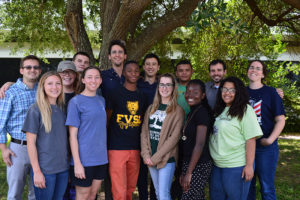SREL summer students study radiation movement in SRS ecosystems
Thomas Gardiner
Augusta Chronicle
Contact: (706) 823-3339 or thomas.gardiner@augustachronicle.com
Posted June 18, 2017

The University of Georgia’s Savannah River Ecology Laboratory welcomed 14 students to its summer undergraduate program last week.
The group was selected to take part in a 10-week program called Research Experience for Undergraduates. Funded by the National Science Foundation, this is the only REU program allowing students to study the fate, transport and effects of radioactive elements in the environment, known as radioecology.
Savannah River Site, host of SREL, was established in the early 1950s to produce plutonium for nuclear weapons during the Cold War. Radiological material was released into the environment over the years, including tritium.
Animals around the site, including fish and turtles, have tested positive for the radioactive element Cesium-137 and elevated mercury. Mercury is used in mercuric acid in processing on-site, but most of the mercury seeped into the environment is from coal ash basins.
The 310-square mile area of Savannah River Site and restricted access gives the students a unique opportunity to study animal life and movement.
The program began with intense training in protocols and handling of radioactive elements.
Through the program, students develop and complete a research project with guidance from a faculty mentor. Students gain field and lab experience that is crucial to their future job skills. The students will also present their findings at a research symposium in Columbia at the end of the program.
For more information about education programs at SREL visit www.srel.uga.edu
